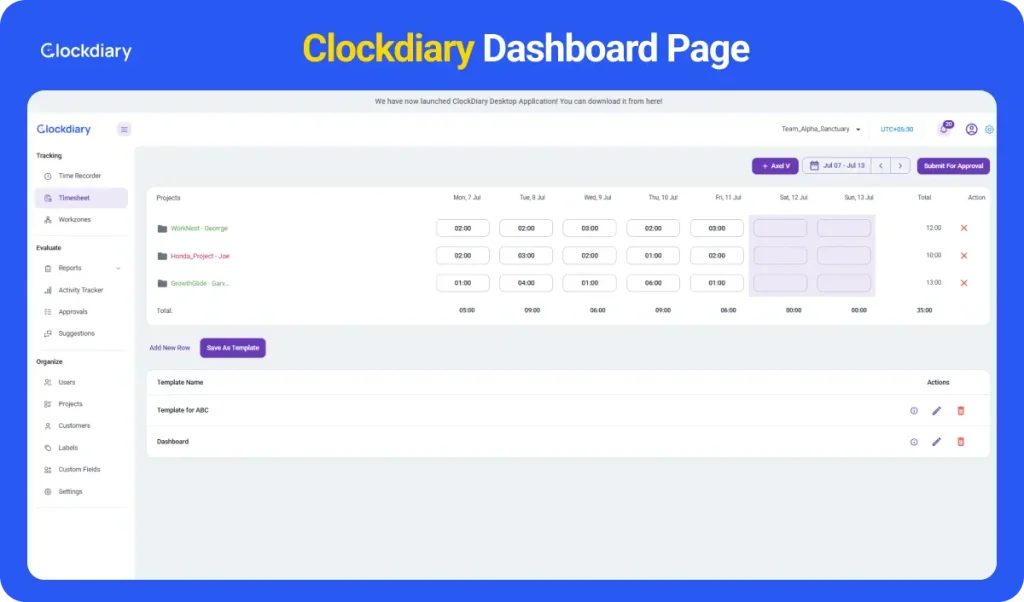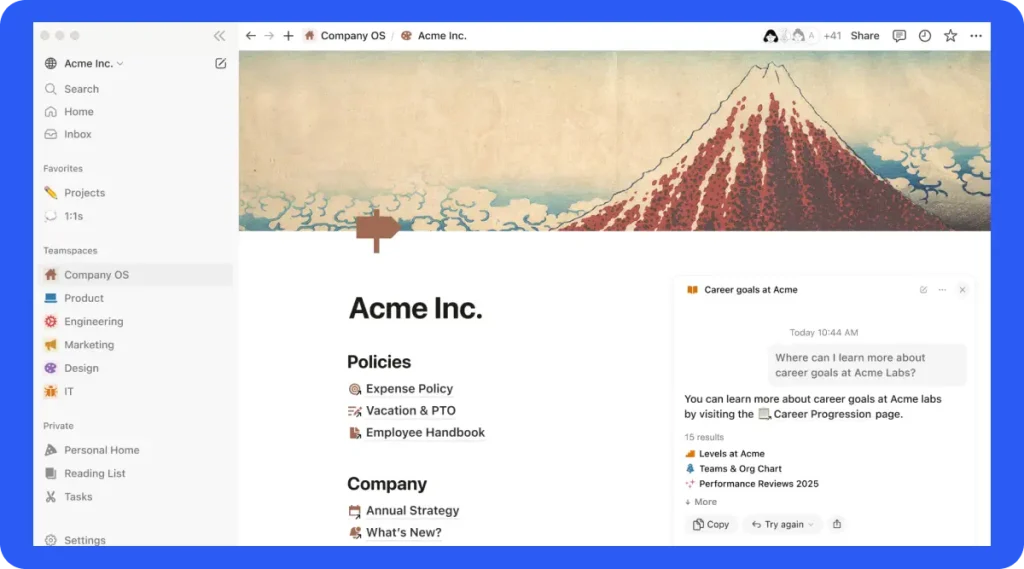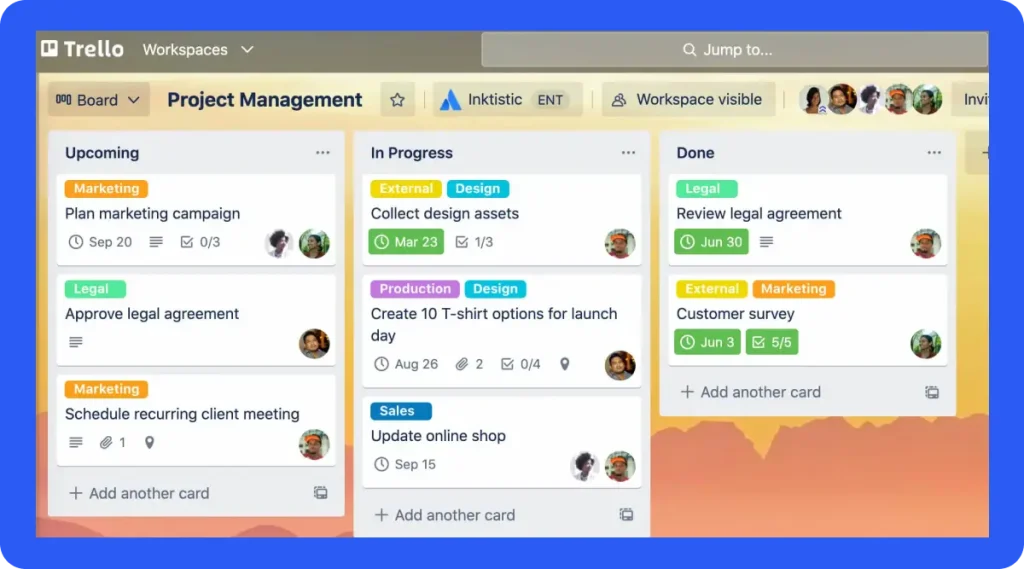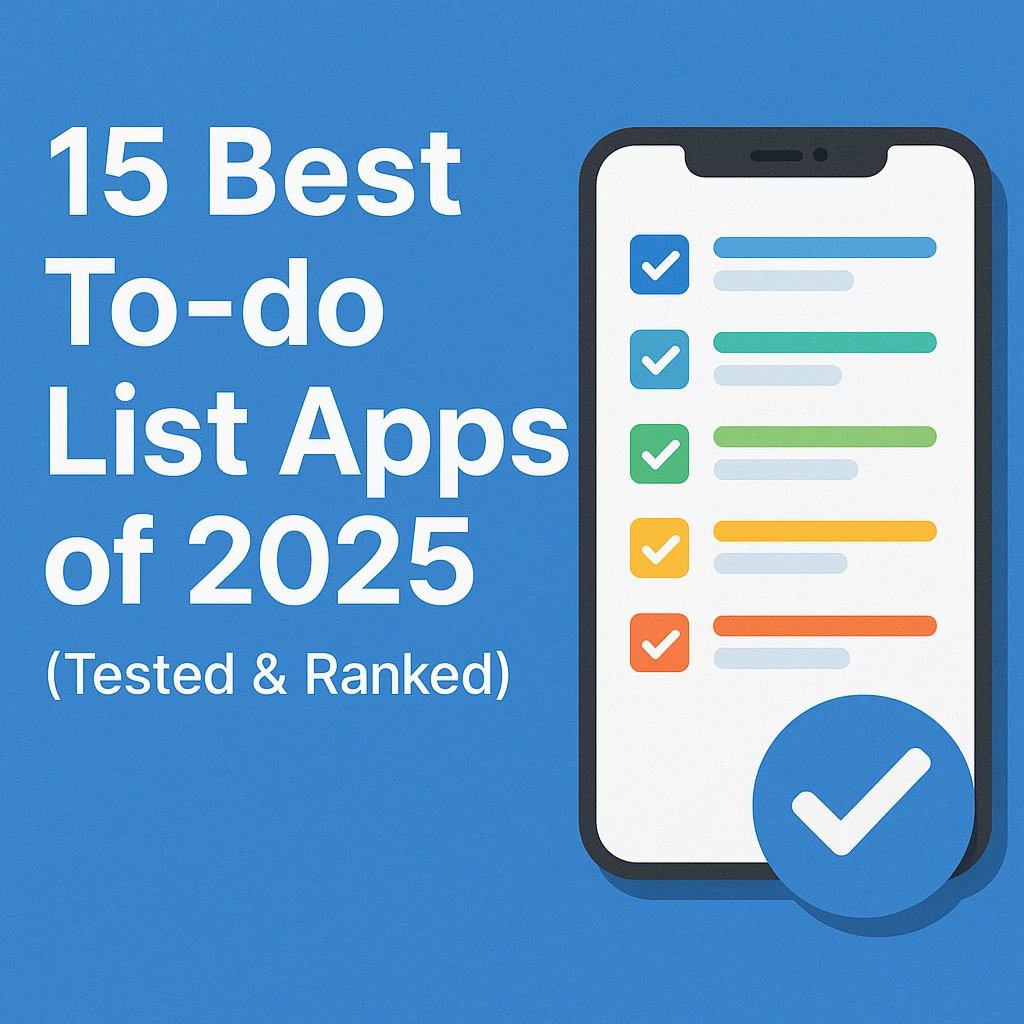Ever feel like you are constantly busy but not actually getting anything done? A recent study reveals that almost 82% of professionals don’t follow a structured time management system like time mapping, and nearly 60% admit to losing at least an hour each day because of poor planning, distractions, or failure to prioritize effectively.
Whether you are an employee, freelancer, or a remote worker, this means that you lose almost 365 hours every year to unproductivity. And that number is no joke. Visual time management methods like time mapping help you take control of your schedule, stay focused, and be productive.
In this guide, we will explore what time mapping is, how does mapping work, the benefits of using a time map, and step-by-step instructions to build your own. Plus, we have included free time mapping templates to help you get started right away.
What is Time Mapping?
Time mapping is a time management method that involves visually organizing your day, week, month, or year into specific blocks of time for different tasks. A time map can be used for both work-related and personal activities, including spending time with your family or self-care.
Mapping time is extremely powerful as it gives you a clear pictorial representation of how your time is being spent and allows you to rate the quality of those hours.
In fact, according to a Forbes article, a time map is a powerful tool to a purposeful life
Since it resembles a physical map that provides the right direction, time mapping guides employees through activities. It helps you plan when to do each task, allowing for better structure, focus, and productivity.
What are the Components of a Time Map?
Time mapping should be done with deep thoughtfulness in order to plan your day correctly according to your priorities, energy levels, and personal goals.
When done right, a timemap becomes a visual snapshot of how you want to live your time, productively and intentionally. Here are the key components that make up a strong time map:
- Time Blocks: These are specific chunks of time that are assigned to specific tasks or activities.
- Activity Categories: Tasks are grouped into activity categories under labels like Work, Personal, Health, or Admin, which helps balance priorities.
- Color Coding: By using distinct colors for each category while time mapping, you make your schedule easier to read and follow.
- Fixed vs. Flexible Tasks: Your timemap must combine non-negotiable tasks (like meetings) with flexible ones (like reading or breaks).
- Buffer Time: It is important to leave short gaps between tasks to allow room for delays, transitions, or mental reset.
- Review & Reflection: Every now and then, (weekly or twice a week) set time aside to assess what’s working and adjust your schedule accordingly.
How to Structure a Time Map?
Structuring a time map is about creating a clear, visual layout of how you want to spend your hours. For a working employee, this ensures you are in control of your time and not reacting to whatever task comes your way. The goal is not to micromanage every second but to guide your focus toward what truly matters.
Here’s how to structure a time map effectively:
- Define your time range: Choose whether you are planning for a day, week, or month. Weekly time maps are popular because they offer flexibility and a broader view.
- List your recurring activities: These include work hours, meals, sleep, family time, or exercise. These form the foundation of your map.
- Break your day into time blocks: Use hourly or 30-minute blocks depending on how detailed you want to be.
How to Create a Time Map: Step-by-Step Guide
According to the National Library of Medicine, proper time management is extremely effective for employees in increasing their job performance. Through time mapping, you not only organize work hours effectively but also bring clarity and control to your daily routine.
If you are confused about how to use time mapping, you should follow this step-by-step time mapping guide to create a visual daily or weekly work schedule.
Step 1: Audit Your Current Time Usage
The first step to start time mapping and managing your work responsibilities properly is to know where your time is actually going.
Start by tracking your daily activities for at least 3 to 5 days (a full week is ideal). Do not rely on memory.
Rather, use a time-tracking app like Clockdiary, a journal, or even a spreadsheet. Include everything from work meetings and social media scrolls, to meals, commute, emails, breaks, and chores, etc.
This audit helps you spot:
- Time leaks (like unexpected distractions)
- Time-wasters (like aimless browsing)
- Unrealistic expectations (trying to do too much in too little time)
TIP: Log your time in 30-minute increments. Be honest with yourself.
Step 2: List Personal, Work, and Miscellaneous Tasks
Next, break down all the things you need and want to do during your workday and work-week into broad categories. This is not just about work productivity. It is also about building a holistic map of your life.
For example:
| Work | Personal | Miscellaneous |
| Emails Client meetings Creative projects Admin tasks Professional development | Exercise Meals Family time Relaxation Sleep | Commuting Errands Hobbies Social time Mindless scrolling (yes, log it) |
This helps you visualize the full spectrum of your responsibilities and desires, and not just the “productive” tasks.
Step 3: Define Your Priorities
Not everything is equally important. Now that you have a full list of tasks, organize them based on what actually matters to you.
Use a method like the Eisenhower Matrix (urgent vs. important) or the Ivy Lee Method (limit to top 6 tasks/day).
Ask yourself questions like:
- What’s essential for my work/life goals?
- What brings me energy vs. what drains me?
- What can I reduce, delegate, or eliminate?
Defining priorities will help you structure your timemap around what is truly valuable and not just what feels urgent.
What is the Eisenhower Matrix to define priorities?
The Eisenhower Matrix, also known as the Urgent-Important Matrix, is a time management and decision-making tool that helps you prioritize tasks based on urgency and importance.
It was named after Dwight D. Eisenhower, the 34th U.S. President, who famously said: “What is important is seldom urgent and what is urgent is seldom important.”
It divides tasks into 4 quadrants:
| Quadrant | Type | Action | Example |
| Q1 | Urgent & Important | Do it now | Crisis handling, deadlines, urgent meetings |
| Q2 | Not urgent but Important | Schedule it | Long-term planning, skill development, strategy |
| Q3 | Urgent but not important | Delegate it | Interruptions, some emails or meetings |
| Q4 | Not urgent & not important | Eliminate it | Time-wasters like scrolling social media or busy work |
The Eisenhower Matrix can help you categorize your work tasks before placing them on a time map, ensuring you’re focusing on high-value work and not just staying busy.
What is the Ivy Lee Method to define priorities?
It was developed in 1918 by productivity consultant Ivy Lee, who was hired by Charles M. Schwab, president of Bethlehem Steel Corporation, to improve his team’s efficiency.
Even after more than 100 years, this method is still being praised by organizations and businesses as being effective for improving the productivity of their employees.
How the Ivy Lee Method Works:
- At the end of each workday, write down 6 important tasks you need to accomplish the next day.
- Rank them in order of true priority, from most important to least important.
- The next day, start with the first task and work on it until it’s completely finished.
- Move to the next task, then the next, one at a time.
- At the end of the day, if any tasks are left, move them to the next day’s list.
- Repeat the process daily.
Step 4: Assign Time Blocks for Each Category
Now comes the actual time mapping. Break your day or week into specific time blocks based on the categories and priorities you listed earlier. A block can be 30 minutes or 3 hours, depending on the task.
For example:
- 9:00-11:00 AM: Deep work/project
- 11:00-11:30 AM: Email check
- 1:00-2:00 PM: Team calls
- 6:00-7:00 PM: Family time
- 8:30-9:00 PM: Wind down & planning
TIP: Include buffer time between tasks to avoid burnout or running late. And do not forget to block time for breaks, meals, rest, and personal care.
Step 5: Use Colors to Visualize Your Schedule
A good time map is also visually intuitive. Assign different colors to categories so you can instantly recognize how your work day is balanced.
Color-coding helps you quickly identify where your time is going and whether you are overcommitting to one area while neglecting another.
Step 6: Test, Review, and Adjust Your Time Map
The final step in our guide to time mapping is testing it for a week. Be flexible and observe how well it aligns with your real energy levels, focus patterns, and responsibilities.
Ask yourself questions like Did I overestimate how long things take? Was there enough time for breaks or transitions? Did I enjoy my day more and feel less overwhelmed?
Adjust your map based on what’s working and what’s not. Some people review and tweak their time map weekly or monthly. Others make daily edits. The key is to stay reflective, not rigid.
REMINDER: You’re building a system that works for you and not a perfect schedule that looks good but feels impossible.
Time Mapping Templates (Free Download)
Creating a time map from scratch can take a lot of time. To make things easier for you, we have put together a ready-to-use time mapping template for working professionals that reduces time wastage and acts as a productivity system for busy professionals.
Here is your time mapping template Excel format for weekly task scheduling:
Download Your Weekly Time Mapping Template Here
Here is your time mapping template Excel format for daily task scheduling:
Download Your Daily Time Mapping Template Here
Time Mapping Tips to Follow
Time mapping can become the change you need for increasing your productivity, but only if you approach it the right way. A good time map reflects your real energy levels, priorities, and lifestyle. Below are some practical tips to help you build a time map that works:
1. Use a Digital Tool or Template
Digital tools like Google Calendar, Notion, Excel, or Clockdiary make mapping time smoother. They allow for easy edits, color-coded categories, and recurring time blocks, which are hard to manage on paper. With tools like Clockdiary, you can even track how you are spending time in real life and adjust as needed.
2. Account for Your Energy Levels
Everyone has a natural rhythm. Mornings are usually when focus and willpower peak, so schedule deep, demanding work then. Post-lunch or late afternoon is better for lighter tasks like email, admin, or planning. Matching tasks to energy levels improves performance without burning you out.
3. Track Time Spent vs. Planned
Time maps are a plan, but reality often shifts. Regularly check how much time you actually spend on each activity. This helps spot time leaks, adjust your expectations, and fine-tune your future maps to be more accurate and effective.
4. Prioritize Deep Work Blocks
Protect your most valuable hours by blocking out time for deep work, the stuff that moves the needle. These should be non-negotiable, free from distractions, meetings, or multitasking.
According to a Forbes article, an average employee loses up to 720 work hours due to distraction every year. Checking mobile phones has topped this list, with the average person checking it almost 150 times a day.
Owing to these high distractions, even just one focused block a day can dramatically improve your output.
5. Include Personal Time Intentionally
Your time map shouldn’t be all about work. Include time for exercise, family, hobbies, mental health, or just doing nothing. Intentionally scheduling personal time keeps your routine balanced and burnout-proof, making it easier to stick with over time.
Who Can Benefit from Time Mapping?
Time mapping is a flexible method that can benefit anyone, not just working professionals, who want more clarity, structure, and balance in their daily lives. Here are the different people who can benefit from time mapping:
1. Professionals & Knowledge Workers
If your day involves deep focus and multitasks like managing multiple projects, time mapping helps you structure your work hours so that important tasks do not get buried under busywork. It gives you a visual breakdown of when to focus, when to collaborate, and when to take breaks.
2. Students
From attending lectures to studying and managing extracurriculars, students have a lot of tasks on their plates. A time map helps them stay ahead of deadlines, avoid cramming, and carve out time for self-care and social life.
3. Freelancers & Entrepreneurs
When you do not have a 9-to-5 structure, managing time can be chaotic. Time mapping creates rhythm and balance, helping you prioritize client work, admin tasks, content creation, and personal time, without burnout.
4. Remote Workers
Working from home often blurs the lines between professional and personal time. A time map restores boundaries by clearly defining when you’re “on” and when you’re off-duty.
Using time management apps has also been shown to boost productivity by up to 30% among remote workers. Additionally, 45% of those who adopted these tools for following techniques like time mapping reported a noticeable improvement in their work-life balance.
5. Parents & Caregivers
Time mapping helps bring order to the work at home by allowing you to create intentional blocks of time for caregiving, housework, professional tasks, and personal care. By visually organizing your day, it becomes easier to balance your roles and reduce feelings of overwhelm.
6. People with ADHD or Executive Function Challenges
Many people with ADHD or focus-related difficulties benefit from visual scheduling. Time mapping breaks the day into manageable parts, reduces decision fatigue, and builds consistent routines. Those people can also resort to using ADHD-friendly time management apps for time mapping to make things easier.
7. Anyone Feeling Overwhelmed or Unproductive
Even if you’re not in a demanding job or caregiving role, you can use time mapping to bring clarity to your week. It helps you identify what truly matters, eliminate distractions, and make room for meaningful activities.
Why is Time Mapping Relevant Today?
With constant notifications, blurred work-life boundaries, and growing to-do lists, most of the time, employees feel like they are always busy but rarely in control. This is exactly where time mapping becomes incredibly relevant. Here are some of the benefits of time mapping that explain why it is relevant today:
1. We have Too Many Tasks to Complete
Not just work, home, personal goals, mental health, and relationships all demand time and attention. Without a structured way to see and plan how you use your time, it is easy to feel overwhelmed. Time mapping gives you a visual layout of your day or week so you can prioritize what matters.
2. Remote Work & Flexible Schedules Need Boundaries
Now, many employees no longer work a strict 9-to-5 job. While flexibility is great, it often blurs lines between personal and professional time. Time mapping restores those boundaries by clearly separating work tasks from rest, family, or hobbies, helping prevent burnout.
3. Attention Span is Less
With constant digital distractions, our focus is fragmented. In fact, Yahoo Finance states that workplace attention is dead and almost 60% of workers cannot go by 30 minutes without getting distracted.
All these call for urgent measures like time mapping. By using a time map, you can set blocks for deep work, limit context switching, and build in buffer time, allowing your brain to focus better and reduce mental fatigue.
4. Mental Health and Work-Life Balance Needs More Focus
Burnout, stress, and decision fatigue are rising. A time map reduces the daily mental load by pre-deciding when you will work, rest, and recharge. It brings structure without rigidity, offering both productivity and peace of mind.
A study by ResearchGate underscores work-life balance as a chain reaction where better balance leads to higher productivity.
5. Goals Don’t Happen Without Time Allocation
Whether it is learning a skill, starting a side project, or improving health, goals require consistent time investment. Time mapping ensures that these important, but often neglected areas don’t get crowded out by urgent tasks.
6. It Encourages Mindful Living
Instead of reacting to every demand, time mapping encourages proactive planning. You get to decide what your days look like, which helps build a life around your values, goals, happiness, and needs, not just your obligations.








